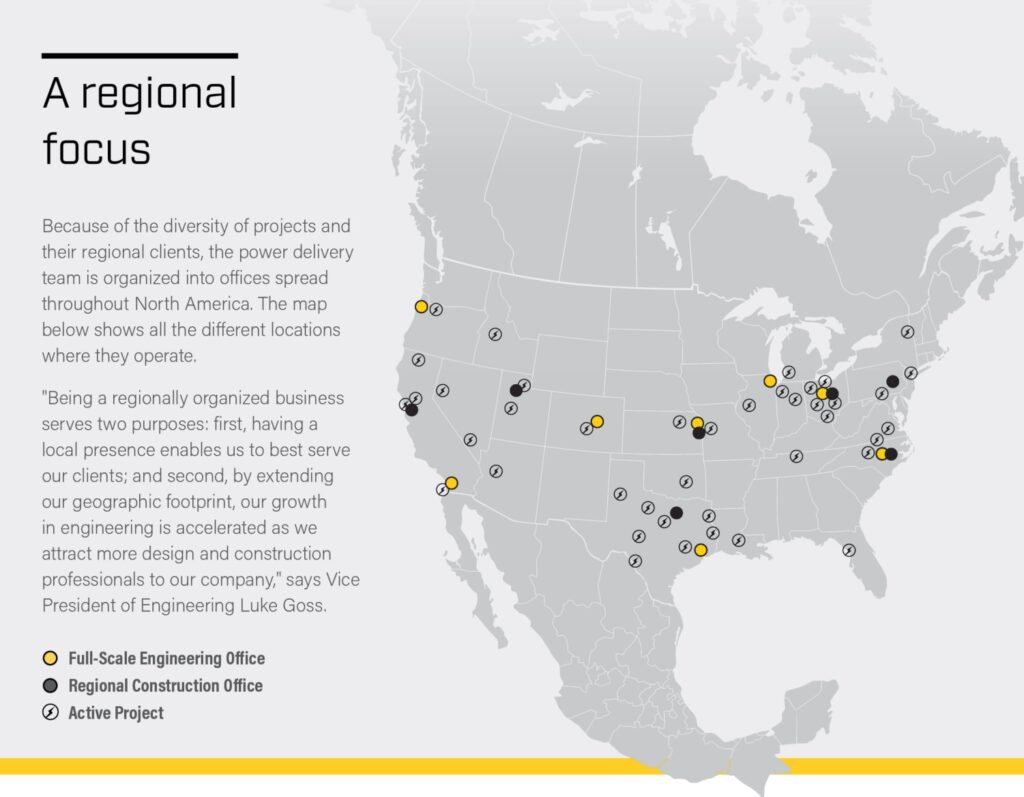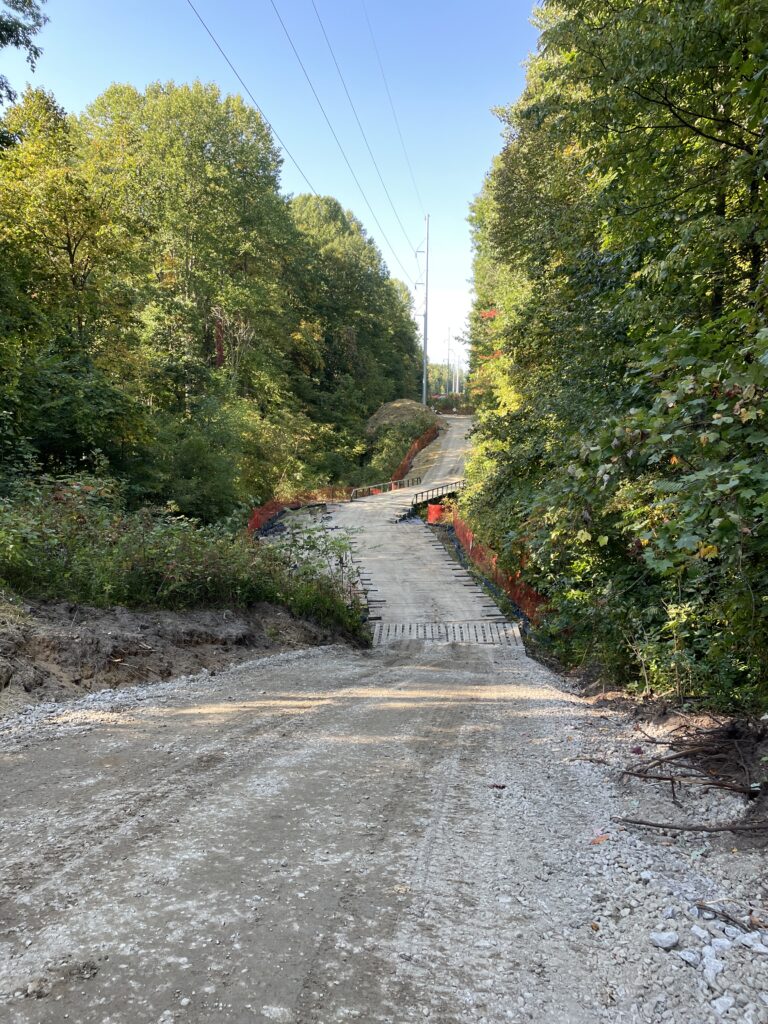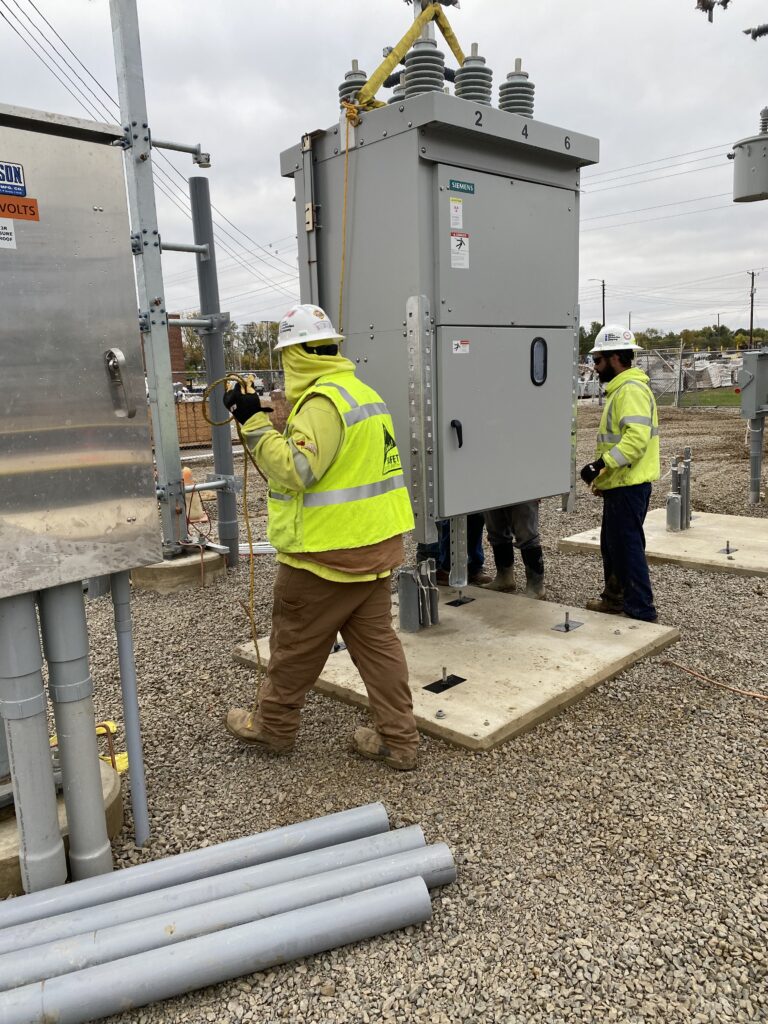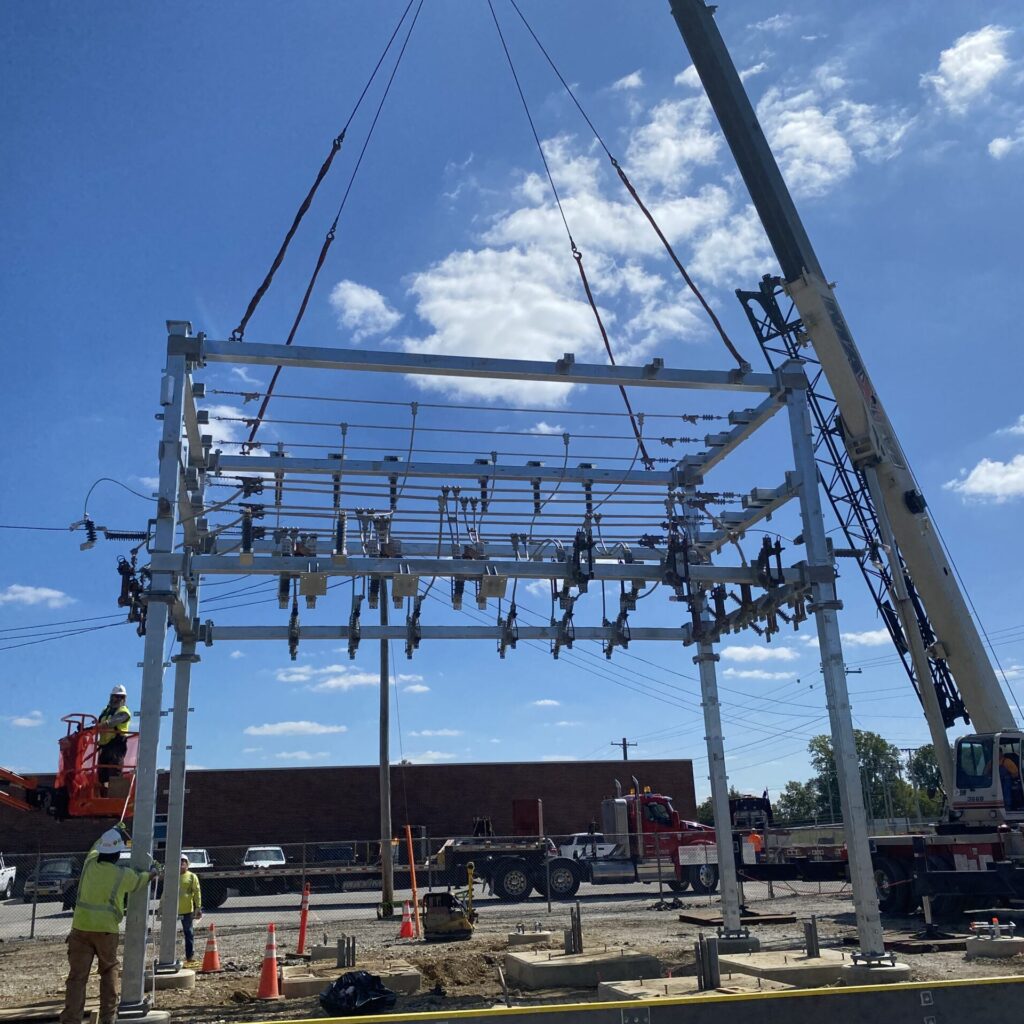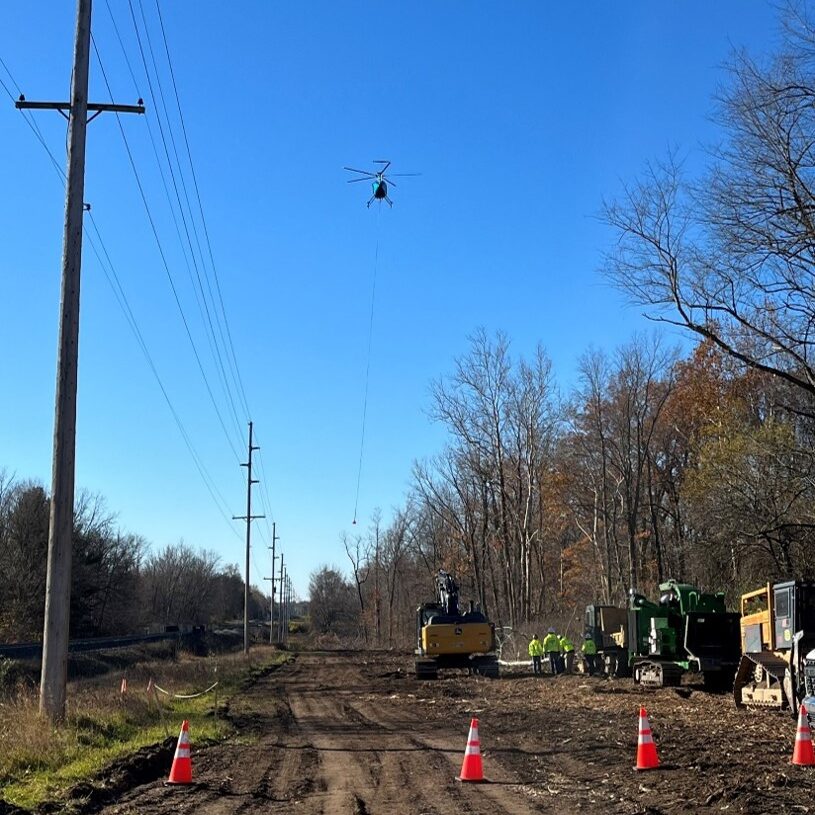Power is one of the most visible markets in the engineering and construction industry. A single power generation source — whether it is a wind farm, solar farm, nuclear power plant, or traditional fossil fuel — creates a large number of economic and regulatory opportunities. How this power reaches individuals, though, is often overlooked.
Kiewit’s power delivery projects are collaborative efforts between many different areas of the company. From market strategy to engineering and construction, it takes a coordinated approach to achieve success.
Careful planning
To take a high-voltage transmission line out of service for repairs or improvements, years of advance planning are needed to avoid potential outages.
To mitigate these risks, Kiewit has pioneered the use of advanced construction methodologies that not only accelerate project timelines but also ensure the highest standards of quality. These projects benefit from advanced simulation, incorporating Building Information Modeling (BIM) and Virtual Design and Construction (VDC).
Senior Vice President Paul Conry explained the key difference between Kiewit’s past and future in power delivery: “With our self-perform capability, we’re able to provide the complete solution for our client in all aspects of construction, from substations to overhead to underground transmission and distribution work.”
Into the future
In particular, replacing existing infrastructure presents logistical issues. It’s the difference between wiring a brand new home and rewiring a home with an aging electrical system — all with minimal outages.
In Michigan, Kiewit recently replaced two 1950s-era transmission lines, swapping wooden poles with steel poles. Line upgrades are becoming increasingly common across North America to accommodate new power sources.
How Kiewit builds a transmission line
Kiewit has developed transmission and distribution line designs for thousands of circuit miles of line. However, each project must be approached differently. Geographical and environmental factors, existing transmission lines, ongoing maintenance and outage preparedness can influence a client’s needs and the scope of a team’s work.
Analyze the Site
When a new or upgraded transmission line is needed, Kiewit assists the client in identifying and analyzing potential routes. This initial phase consists of planning for potential obstacles and opportunities: considering impacts to landowners, presence of existing utilities and number of custom structures for the different route options.
Model the Line
At a project’s onset, the transmission engineering team reviews available site information and coordinates to obtain anything needed to begin design. The team then processes the received survey into a 3D model, and the line is modeled and analyzed to ensure all client and industry standards are met.
Model reviews are conducted with stakeholders. This bird’s-eye view approach is one of the highlights of construction-informed engineering at Kiewit.
Design the Structures
The design team engages early with the client, construction team and all other stakeholders to select the best structure type for the project. Loading is then analyzed with dedicated software, and structure specifications are prepared for procurement and construction.
Design engineers stay engaged throughout the entire procurement and construction process to review structure calculations and drawings, and ensure structures are fabricated and installed according to specifications.
Design the Foundation
In addition to structural engineering expertise, Kiewit employs geotechnical engineers with a vast pool of experience. The team coordinates site investigations and geotechnical recommendations for use in foundation design.
Geotechnical and structural engineers remain engaged throughout the construction process and provide real-time technical solutions to any issues that may arise during foundation installation.
Construct the Line
From here, the project progresses into construction. Apart from erecting towers and stringing the transmission lines, there are future-proofing considerations that have increasingly shown up on projects. As the communication needs for utilities increase, the addition of fiber optics on transmission lines provides a reliable form of communication network.
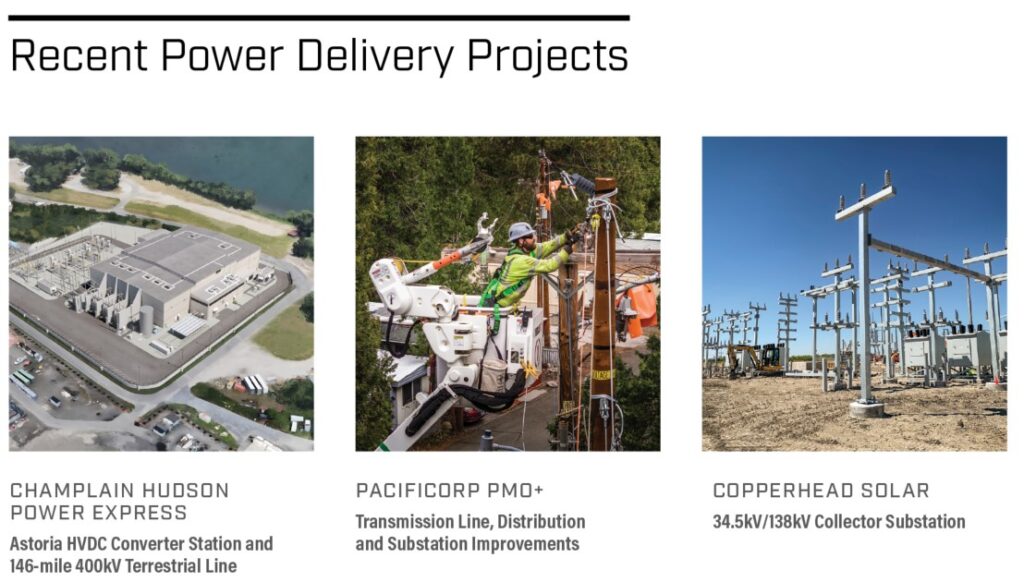
Navigating a changing landscape
The power delivery market for Kiewit now represents one-third of its total power market, and has grown over the last three years to 9% of the total company volume.
“It’s rapid growth, not just in the demand for our work, but in what we’re able to accomplish. Our experience makes it possible to train new employees and give them the tools to succeed on these projects faster and more effectively than any other employer,” said President of Kiewit Power Delivery Chad Jessen.
Part of the growth is fueled by a global shift towards renewable energy sources, with the construction and engineering industries actively embracing projects focused on wind, solar and other sustainable solutions. In combination with high-profile natural disasters such as wildfires, the demand for reliable energy infrastructure across North America is steadily increasing.
Notable high-voltage direct current (HVDC) projects, such as Champlain Hudson Power Express, are also expanding Kiewit’s experience in developing and implementing renewable energy infrastructure on a large scale. “We’re one of the first EPC contractors to build a greenfield HVDC project in the United States in the last ten years, and it’s an area where we’re prepared to lead the industry,” said Jessen.
